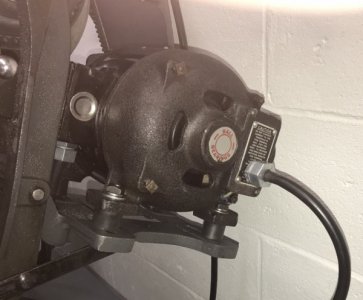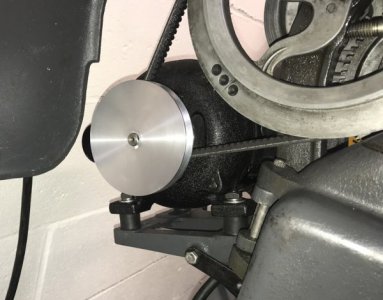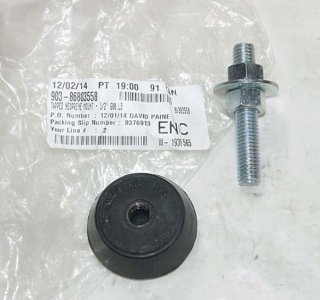-
Welcome back Guest! Did you know you can mentor other members here at H-M? If not, please check out our Relaunch of Hobby Machinist Mentoring Program!
You are using an out of date browser. It may not display this or other websites correctly.
You should upgrade or use an alternative browser.
You should upgrade or use an alternative browser.
Motor Vibration
- Thread starter JPMacG
- Start date
- Joined
- Apr 12, 2013
- Messages
- 562
Harmonics can cause strange vibrations at times. Usually experimenting with soft and hard mounts, dampening weights, etc. will help. Sometimes there is no good solution except a new motor. My Atlas requires a precise shim under the 'floating' motor mount or the small irregularities in the pulleys cause occasional motor bouncing. Too much shim and the motor to countershaft belt is loose. Too little and it bounces anyway. It took me almost a year to get it right.
- Joined
- Apr 12, 2013
- Messages
- 562
It was sort of dealt with above, but to summarize bearings and such act differently under load than when coasting, even when the motor is in a 'no load' condition, internally it is still loaded. Wiring with current running through it moves via magnetic induction. Magnetic fields changing move wires and ferrous metals. Even a simple induction motor has a lot of places that could cause vibrations. For our big industrial motors we see them move quite a bit when powered up vs. resting, so couplings are best installed based on the running shaft position, not the resting position. Smaller scale, but it still happens in little motors.Maybe one of you Electrical gurus out there can give some insight as to why this motor would vibrate while supplied with electricity, but stop vibrating when current is switched off even though it is still spinning fast. Thanks, JR49
- Joined
- Mar 22, 2014
- Messages
- 870
Thanks everyone. I will check the capacitor and do the de-mag that Whitmore described. I need to move the lathe away from the wall to get access, so I'll wait until I have a few hours to spend. If these ideas don't work then I'll try a soft motor mount - rubber isolated studs if there is room, or at least a rubber mat under the motor base if not enough room for studs. I'm not to the point of spending the $$ for a 3-phase motor and VFD just yet. I also like preserving the machine in its original form.
- Joined
- Mar 22, 2014
- Messages
- 870
I went ahead with the soft motor mounts. These are neoprene rubber mounts from McMaster-Carr. They are 1 inch diameter, 3/4 inch tall and are rated at 50 lbs each. The cost was about $2.50 each. They definitely helped - I can no longer feel the 120 Hz motor torque vibration on the lathe bed with my fingers. I'm not sure how well they will hold up - time will tell. I probably "fixed" something that did not need fixing, but eliminating vibration makes me feel good.




- Joined
- Apr 30, 2015
- Messages
- 12,245
Keep an eye on the rubber- you don't want the motor tearing itself loose- you might consider a couple of safety straps or lanyards from
the motor feet to the mount plate as an extra precaution
Mark
the motor feet to the mount plate as an extra precaution
Mark
- Joined
- May 4, 2015
- Messages
- 3,583
That type mount usually last many years in normal use . With no oil or other lubes getting to them heat is the only enemy . I've replaced literally hundreds on pressure washers and portable generators, even chainsaws use a mount along the same lines. Oils and gas cause them to break down over time.
- Joined
- May 10, 2014
- Messages
- 819
could rubber mounts be used on a drill press if the bolt is also buried in the rubber so there is no steel to steel contact?
I think so, if you just want isolation of vibration rather than bolting to the floor. FYI these may be available with the bolt set in the rubber, or a nut set in the rubber and a separate stud. A picture of the latter I purchased. This was purchased from ENCO, but now available in US at MSC perhaps others sources.

